When I planned my trip to Brooklyn, NY, the goal was to find the most unique and elevated food experiences I couldn’t have in Los Angeles. A standout on my list was Shalom Japan, a restaurant that calls themself “authentically inauthentic” Jewish and Japanese food. This combination seemed perfect for me as a Jewish person with an undeniable affinity for delis and as a huge fan of Asian cuisine — and in many ways these two cultures came together in ways that were unexpectedly genius. But that wasn’t always the case.
Shalom Japan opened on the Southside of Williamsburg in 2013, the concept from two married chefs, Aaron Israel and Sawako Okochi. The inspiration was not only their own roots but the “vibrancy of Brooklyn,” hoping to create a menu full of “unique culinary perspectives” that showcase a passion for food and diversity.
Just as Shalom Japan was described on its own website, the unassuming restaurant is seemingly plopped down on a random corner, looking quite ordinary from the outside. Walking inside, however, there is a sense of elevation, of purposeful decisions meant to inspire closeness and intimacy while enjoying a meal.
And just look at this bathroom.
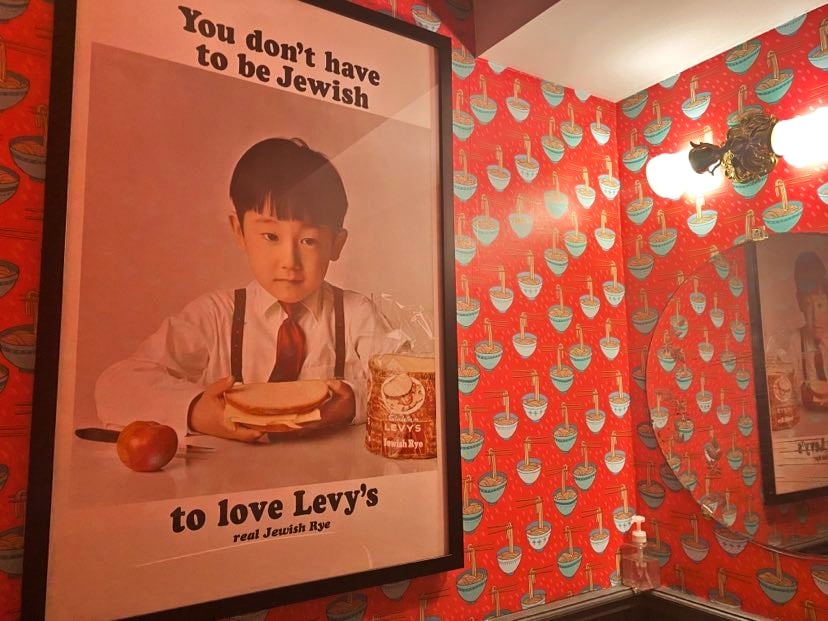
But would the food be as innovative as the concept?
Our first appetizer was the Sake Kasu Challah, which was essentially a piece of golden brown challah paired with golden raisin butter. I personally found it to be a warm and welcoming introduction to the meal, with a soft and fresh piece of challah that was the perfect temperature to gently melt the reasonably sweet butter.
While satisfying in its texture and presentation, I was a bit surprised at the simplicity of the flavors. The challah didn’t have that signature sweetness that sets it apart from a regular loaf of bread. While the spread was pretty mild in its flavor, it still overpowered the challah for me. Still, it was a great opener compared to something blasting us with dessert-like components right away.
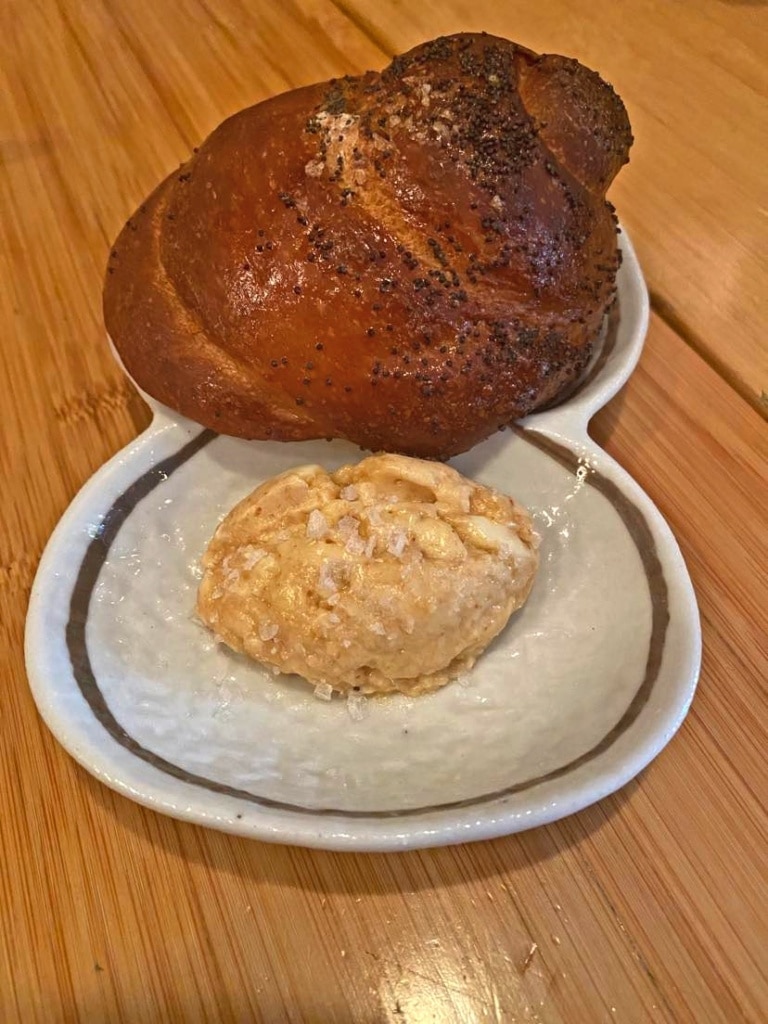
The Lion’s Mane Karaage appetizer was next, a play on a Japanese dish that usually has deep fried chicken. It also claimed to have pickled chilis, which is most likely the “fusion” part since we love our pickles and pickled things. But to me, this was presented entirely as a vegan variation of a Japanese classic without any real inspirations from Jewish culture.
Still, the mushrooms were crispy on the outside and surprisingly juicy inside without making the pieces soggy or greasy. It had a great savory flavor but I immediately felt I was missing some kind of sauce to dip it in. My friend suggested squeezing the lemon onto it, which did play with the flavors a bit more, but it still felt a little one-note. The “pickled chili” taste was nowhere to be found for me.
I asked the waiter if they had any horse radish, which seemed like a Jewish version of something akin to a spicy mayo, which would give the dish some dimension. But the waiter actually looked stunned at my request and said the restaurant didn’t even have horse radish. When some reviews on Google say “more Japanese than Jewish” I am inclined to agree.
Still, they did bring over some very, very, very mild spicy mayo that didn’t really have as much punch as I’d hoped. In fact, I could barely taste it. While disappointing, there was no denying how well the karaage was cooked and the texture and saltiness was pretty satisfying on its own.
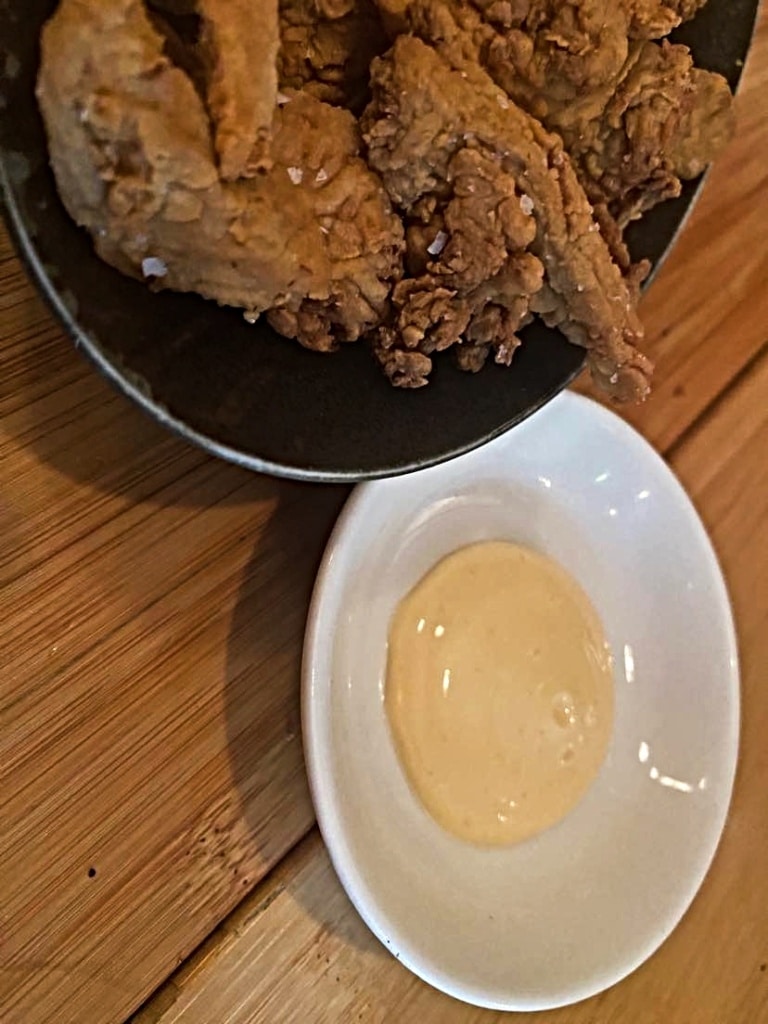
Next was the Okonomiyaki, which sounded like a very eclectic appetizer option. With wagyu pastrami, sauerkraut, and bonito flakes, it seemed like this would be our best chance at a combination of cultures on the appetizer side of the menu.
The old-school Okonomiyaki is originally from Osaka, made with cabbage, flour, eggs, and pork. This variation seemed to have some type of potato-inspired base, making it more latke-like in texture and flavor. It was a bit doughy when it came to the texture, however, with the chewiness being a little off-putting in big portions.
The wagyu pastrami was a nice twist on the original ingredients but these chunks of meat were quite scarce. I think I counted five or six in total, which was barely enough for the entire pancake. Instead, my friend and I were getting a lot of mouthfuls of bonito flakes, which made the Okonomiyaki suddenly taste fishy.
The problem for me was that none of the textures or flavors really blended together to create a seamless and layered bite. Instead, I felt I was getting blasted with random ingredients that didn’t quite work together, creating a bit of a jarring experience. It ended up feeling like a big, mushy mess.
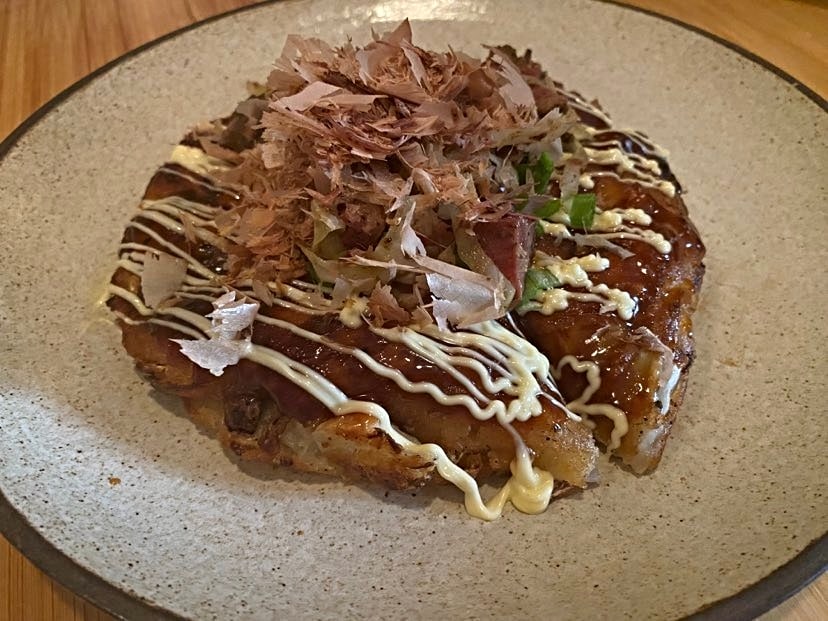
The finale was the Matzoh Ball Ramen, the signature dish of Shalom Japan. As a connoisseur of both matzoh ball soup and ramen, I was very interested to see how these two dishes would come together.
At first, I was a bit thrown off by the blend of chicken broth and traditional tonkatsu ramen flavoring. They seemed to be fighting for the forefront and I was left not knowing which one to focus on. But as I continued, the two flavors started to work together. My friend, who doesn’t have either types of soup as much, didn’t seem to find it so jarring — so it could be a better experience if you have less familiarity with the two soups’ distinct differences.
The matzoh balls themselves were great. They were a bit on the firmer side but were packed with flavor and were very enjoyable to cut into. I was definitely glad I had ordered an extra matzoh ball, especially when I found that the ramen noodles were a bit underwhelming. I didn’t get the fresh taste I get from more authentic ramen noodle shops and I actually decided not to even bother with the extra carbs due to the blandness.
The char siu chicken in place of pork was a nice touch, very juicy and flavorful. I also loved the vegetables, especially the sweet carrots. I wish there had been more of those. There was also some crispy items floating around that were addicting due to their texture and blast of flavor. It was a great touch.
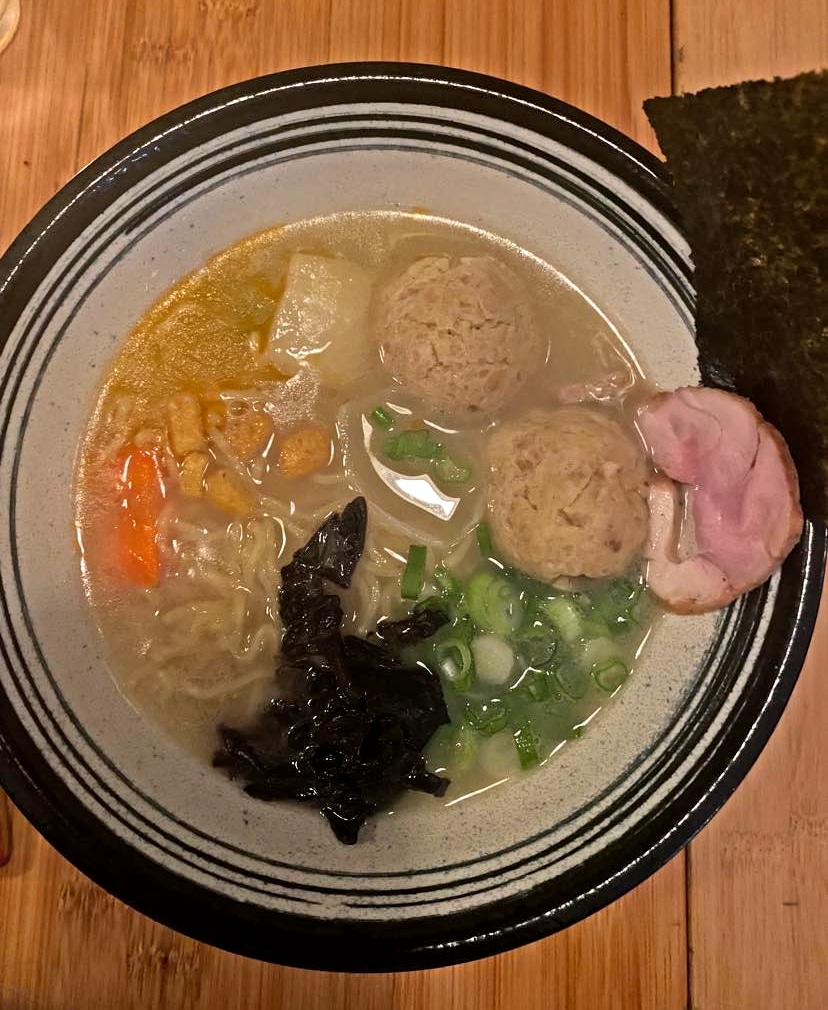
Review By the Numbers:
Ambiance — 6/10
The simplicity of the dining area paired with how tight it felt as waiters squeezed by didn’t make for the most novelty experience. But that bathroom décor really made up for it — I wish we saw more of that kind of eclectic flavor in the rest of the restaurant.
Taste — 7/10
I think this is a place that’s definitely worth visiting if you want to try something you’ve never had before. Even if you don’t like everything you get, you’ll leave satisfied just the same having tried some thought-provoking dishes that haven’t been done before.
The food fell flat for me in some ways, but the most unfortunate observation was the lack of successful fusion. Some dishes felt strictly Japanese while others failed to bring both cultures together in a pleasing way. I think there is more that could be done to play on this unique concept, but you really can’t go wrong with a matzoh ball ramen at least once in your life.
Portion & Prices — 6/10
Well, you’re in New York so you can expect to overpay. Most of the appetizers felt a bit overpriced for the size, but if you’re splitting it between multiple people it won’t be as painful. The ramen was priced pretty fairly, although it sucks it only came with one matzoh ball. The extra ball cost me $3. Still, I came in expecting to overpay due to the location and novelty.
Experience — 9/10
If you want to try something different, you’re in the right place. I had a great time exploring these two vastly different cultures and seeing how they came together on the plate. I left feeling that I did something special and had a food experience that couldn’t be had anywhere else. If you are an adventurous eater, definitely give it a try!
TOTAL SCORE: 7/10
